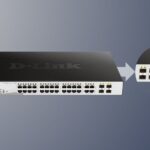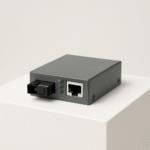
Sep 14 2021
/
Blending Multi-Channel and Single-Channel Architectures in a Revolutionary Hybrid Wi-Fi System
Recent advances in wireless technology provide the flexibility, scalability, and cost-efficiency sought by enterprises to meet the challenges of modern Industrial IoT and BYOD environments.
Wi-Fi Usage Continues to Grow
For nearly 20 years, wireless networking has delivered high-speed internet and corporate network access to the mobile workforce. Wireless Local Area Networks (WLAN) remains extremely popular, and the market for WLAN solutions continues to grow. Recent market reports project the global Wi-Fi market will grow from US$ 5.96 Billion in 2017 to US$ 15.60 Billion by 2022. This growth is due to Wi-Fi’s large installed base and the increased deployment of Bring Your Own Device (BYOD) and Internet of Things (IoT) infrastructures in many different sectors. The emerging fourth industrial revolution (Industry 4.0) and Industrial IoT (IIoT) will also impose challenging connectivity requirements. Both need to support large numbers of heterogeneous devices from passive sensors and low-level automation devices to smart objects like Automated Guided Vehicles (AGV), drones and industrial robots.
Wi-Fi deployments have to address diverse environments, depending on the enterprise. Industrial enterprises deal with numerous data sources that generate large data volumes and streams with very high ingestion rates. These networks need the latest Wi-Fi standards that provide higher speeds, longer ranges, and cost-effective management. Most enterprises that deploy Wi-Fi require resilient architectures that support roaming and mobility. Unfortunately, state-of-the-art Wi-Fi architectures cannot provide robust mobility support and very high throughput for numerous data sources simultaneously.
Typical Wi-Fi Architectures and their Limitations
The first enterprise WLANs were based on multiple-channel architectures (MCA) that are still used by most wireless vendors today. MCAs provide multiple radio channels to access the WLAN, which wireless clients must select to connect to an access point (AP). Clients, such as mobile phones and laptops, decide which AP they will access. When the client moves out of the AP’s range (roaming) or a drop in signal strength occurs, the client must search for a new Wi-Fi AP to maintain the connection.
This is “Legacy Roaming,” and it has several limitations and disadvantages:
Legacy Roaming On Multi-channel Architectures
The first enterprise WLANs were based on multiple-channel architectures (MCA) that are still used by most wireless vendors today. MCAs provide multiple radio channels to access the WLAN, which wireless clients must select to connect to an access point (AP). Clients, such as mobile phones and laptops, decide which AP they will access. When the client moves out of the AP’s range (roaming) or a drop in signal strength occurs, the client must search for a new Wi-Fi AP to maintain the connection.
This is “Legacy Roaming,” and it has several limitations and disadvantages:
Poor Roaming Experience: It tends to be slow and error-prone. Scanning for Wi-Fi APs can take time, and connection to the best AP cannot be guaranteed because mobility was not a primary focus in the early days of Wi-Fi, and MCA was not optimized for roaming.
Sticky Clients: MCA architectures lead to sticky clients who fail to select a better AP even when signal strength degrades. This leads to lower transmission rates and the need to re-send data when signal quality is low. Thus, sticky clients degrade the quality of the communication of the entire Wi-Fi network.
Limited Frequency Space and Interference: When using the 2.4GHz band, there are only three non-overlapping channels (and four in Japan), which causes interference when more than three APs are nearby. Interference is less of an issue on the 5GHz band, where more 20 MHz channels are available, but the use of bonded channels, 40, 80, or 160 MHz, drastically reduces the available channels. Additionally, bad access point placement and poor channel planning can also create interference issues.
Deployment Complexity: MCA architectures do not apply automated radio resource management and interference avoidance mechanisms since these require manual tuning of channels and power levels. Hence, MCA configuration is time-consuming, requires post-site surveys, and requires human experts’ involvement to get the best results.
MCA requires careful planning and installation. A poorly designed MCA network can lead to high deployment complexity and increased installation and maintenance costs. In recent years, vendors have tried to remedy this complexity based on several enhancements to MCA architectures.
To alleviate the roaming limitations of MCA, high-speed roaming protocols (e.g., 802.11k/r/v) have emerged. These protocols guide clients to connect to a specific AP during roaming, which improves accuracy, quality, and speed. However, successful deployment requires clients that support all these protocols, which is not always possible.
Seamless Roaming With Single Channel Architectures
In a Single Channel Architecture (SCA), the wireless system controls the WLAN and decides client-channel association and roaming factors. Clients see the entire network as one Wi-Fi access point, which they see as a single Basic Service Set Identification (BSSID). The access points cooperate in selecting the optimum AP for each client, and users are not aware of any reconnections. This remedies several of the MCA’s roaming challenges: all wireless clients connect on a single radio channel, and all Wi-Fi access points use the same BSSID, which simplifies roaming greatly.
In SCA, only the optimum Wi-Fi access points respond to connection requests from clients. The Wi-Fi access points share client information (e.g., signal strength) for better roaming and mobility, but at the expense of high-capacity data throughput. Also, since only one client can transmit at a time on a single radio channel, SCA is less suited to environments where multiple clients want to transmit simultaneously. Often, this is stated as the main reason why many enterprises prefer MCA over SCA.
Hybrid Wi-Fi Combines the Benefits of MCA and SCA
As MCA and SCA fail to support both high-performance roaming and high-throughput communications, enterprises must either compromise or combine them to optimize WLAN deployments. Combination typically results in multiple WLANs, usually from different vendors and with diverse management systems. Therefore, the deployment of both MCA and SCA solutions increases the cost of WLAN operations significantly and is one of the main obstacles to using SCA networks. Hybrid (SCA/MCA) solutions that implement both architectures on the same AP and use a common management platform can avoid these issues.
One of the most prominent hybrid solutions uses the Autonomous Wave Control with Channel Blanket (AWC-CB) approach, which combines SCA and MCA architectures’ merits, allowing both to operate simultaneously. AWC-CB systems are implemented in software and eliminate roaming and radio wave interference using the single channel. Using AWC-CB avoids packet loss due to roaming and ensures optimum operation for mobile clients. AWC-CB also supports high-speed wireless communications by maintaining an optimal number of client connections.
Allied Telesis offers an AWC-CB solution that provides a seamless roaming environment without any need for channel configuration. It operates autonomously based on automatic settings, and both multi-channel and single-channel architectures operate simultaneously from a single access point. The solution implementation is embedded in Allied Telesis AWC-CB compatible hardware (e.g., Allied Telesis TQ5403). It features technological innovations, including high-speed, low-latency Ethernet, and faster hardware, enabling leading-edge algorithms to adjust the radio power of access points and allocate channels in an automated and intelligent way. It also supports some of the latest Wi-Fi standards (e.g., IEEE 802.11k/r/v, 802.11ac wave 2) to ensure high-speed roaming, high-performance communications, resource efficiency, and configuration and deployment flexibility.
Hybrid Wi-Fi Enables a Superior Wireless Experience
AWC-CB (Channel Blanket) Support: Multiple access points managed with Vista Manager EX can share information to behave as a single virtual access point (aka “Channel Blanket”). Channel Blanket eliminates issues like poor roaming performance and sticky clients and is ideal for challenging environments where reliable roaming is required. As the multi-channel architecture can also be used simultaneously, the best Wi-Fi connection suited to the wireless clients and the environment can always be provided.
IEEE 802.11ac Wave 2 Compatibility: The TQ5403 supports the 802.11ac Wave 2 standard, supporting beamforming and MU-MIMO. Beamforming estimates a wireless client’s position so radio signals can be directed in a specific direction more easily. MU-MIMO (Multiple User–Multiple Input, Multiple Output) enables simultaneous transmit and receive from an access point to multiple clients, to use limited wireless resources more effectively.
Three Radios for the 2.4GHz and the 5GHz Bands: The TQ5403 has one 2.4GHz radio and two 5GHz radios, which can be used simultaneously for maximum throughput.
High-Speed Roaming (IEEE 802.11k/r/v): The standardized high-speed roaming features (IEEE 802.11k/r/v) are supported in a multi-channel architecture to create a seamless roaming environment. Roaming clients will automatically connect to another access point whenever their communication degrades, eliminating performance problems and communication interruptions.
Integrated Central Control: Autonomous Wave Control (AWC) is a wireless management solution that automatically optimizes Wi-Fi coverage by compensating for outside interference and environmental influences.
Easy Management with Vista Manager EX: Vista Manager EX is a complete network management solution that can centrally manage both wired and wireless LANs. Scaling up to Wi-Fi configurations over 1,000 access points, Vista Manager is easier and more cost-effective to manage. Enterprises no longer have to perform channel design as different devices can use different communication modes. Overall, the solution can support many different communication environments with minimal effort for deployment and configuration.
In a Nutshell
The advent of the fourth industrial revolution introduces a range of new requirements for enterprise networking. This asks for significant improvements over legacy Wi-Fi wireless systems to remedy their limitations.
Allied Telesis recently introduced an AWC-CB solution, which combines SCA and MCA’s merits in a single product. It implements a virtualized access point in software, eliminating the need for roaming clients to switch access points. At the same time, it provides scalability and adaptability to the connectivity requirements of numerous wireless devices. It also offers automated and user-friendly management of deployment configurations for optimal CAPEX and OPEX.
Leveraging on leading-edge R&D, Allied Telesis now offers a solution that provides the flexibility, scalability, and cost-efficiency sought by enterprises in their efforts to support modern IIoT and BYOD environments. No matter whether your needs concern smart city or industrial applications, partnering with Allied Telesis will allow you to set up and deploy Wi-Fi networks that provide an excellent experience at a very competitive cost.





